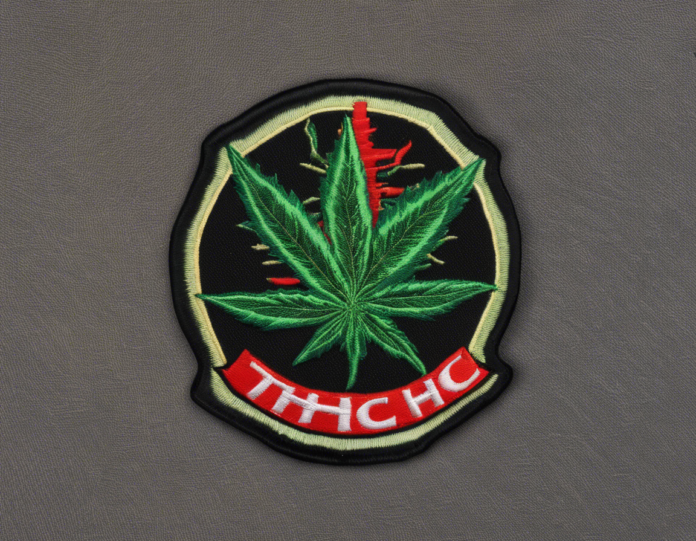Introduction
For individuals suffering from chronic pain, finding effective relief can often be a challenging and ongoing struggle. While traditional pain management methods such as medication, physical therapy, and surgery can be effective to some degree, they may also come with a host of side effects and risks. This has led many patients and healthcare providers to explore alternative options, such as THC patches, as a potential solution for managing pain.
What is a THC Patch?
A THC patch is a transdermal patch infused with tetrahydrocannabinol (THC), which is the main psychoactive compound found in cannabis. The patch is designed to deliver a controlled and sustained dose of THC through the skin and into the bloodstream over an extended period of time. This delivery method bypasses the digestive system, providing more consistent and long-lasting effects compared to other forms of cannabis consumption such as smoking or edibles.
How Does a THC Patch Work for Pain Management?
When a THC patch is applied to the skin, the THC molecules penetrate the layers of the skin and enter the bloodstream. Once in the bloodstream, THC interacts with the body’s endocannabinoid system, which plays a crucial role in regulating pain, inflammation, and various physiological processes. By binding to cannabinoid receptors in the brain and body, THC can help modulate pain signals, reduce inflammation, and promote a sense of relaxation and well-being.
Benefits of Using a THC Patch for Pain Management
-
Localized Relief: THC patches can be applied directly to the area of pain, providing targeted relief without affecting the entire body.
-
Long-Lasting Effects: The slow and consistent release of THC from the patch can provide relief for up to 8-12 hours, making it ideal for managing chronic pain throughout the day.
-
Minimized Psychoactive Effects: Unlike smoking or ingesting cannabis, transdermal delivery of THC results in lower levels of psychoactivity, allowing patients to experience pain relief without feeling high.
-
Convenience and Discreetness: THC patches are discreet and easy to use, allowing patients to manage their pain without drawing unwanted attention in public settings.
-
Fewer Side Effects: Compared to traditional pain medications, THC patches may have fewer side effects and lower risk of dependency or addiction.
Potential Considerations and Precautions
While THC patches show promise as a novel approach to pain management, there are certain considerations and precautions to keep in mind:
-
Legal Status: Cannabis laws vary by state and country, so it’s important to ensure that using THC patches is legal in your area.
-
Dosage and Potency: Different patches may contain varying concentrations of THC, so it’s essential to start with a low dose and gradually increase as needed to avoid adverse effects.
-
Drug Interactions: THC can interact with certain medications, so it’s crucial to consult with a healthcare provider before using THC patches, especially if you are taking other medications.
-
Individual Response: The efficacy of THC patches can vary among individuals, so it may require some trial and error to find the right dosage and delivery method that works best for you.
FAQs (Frequently Asked Questions)
1. Are THC patches legal?
– The legality of THC patches depends on the regulations in your area. It’s essential to check the laws regarding cannabis and THC products before using them.
2. Can THC patches make you high?
– While THC patches contain psychoactive THC, the slow release mechanism typically results in milder psychoactive effects compared to smoking or ingesting cannabis.
3. How long does a THC patch last?
– THC patches can provide pain relief for up to 8-12 hours, depending on the potency and dosage of the patch.
4. Are there any side effects of using THC patches?
– Some potential side effects of using THC patches may include dizziness, dry mouth, and fatigue. It’s essential to start with a low dose and monitor your response.
5. Can I shower or swim with a THC patch on?
– Most THC patches are designed to be water-resistant, but it’s essential to follow the instructions provided by the manufacturer to ensure the patch remains effective.
6. Can THC patches interact with other medications?
– THC can interact with certain medications, so it’s crucial to consult with a healthcare provider before using THC patches, especially if you are taking other medications.
Conclusion
In conclusion, THC patches represent a promising option for individuals seeking alternative methods of pain management. With their localized relief, long-lasting effects, minimized psychoactive properties, and convenience, THC patches offer a unique approach to managing chronic pain. However, it’s essential to consider the legal, dosage, and individual response factors before incorporating THC patches into your pain management regimen. Consulting with a healthcare provider can help ensure safe and effective use of THC patches for pain relief.

